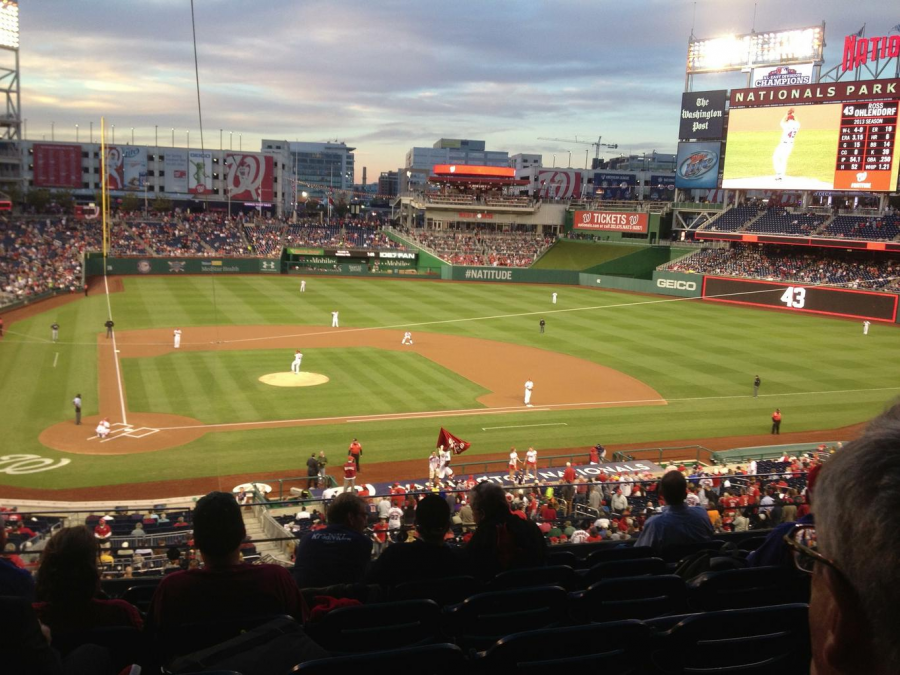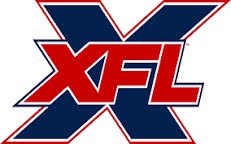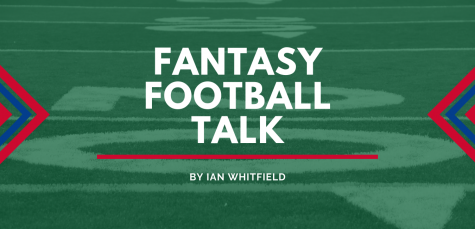Nats Look to Bounce Back in 2019
The Nats first pitch of the season will be March 28th against the Mets.
Nationals Season Preview
After an extremely long offseason, the Washington Nationals are just about ready to wrap up Spring Training and head into their grueling 162 game season. A year after a disappointing season in which they finished second, missing the playoffs, the Nationals changed various parts of their team in an effort to win back the NL East.
Notable Departures
Let’s talk about the elephant in the room. Bryce Harper is gone and is now a Philadelphia Phillie. He signed there for a monumental 13 year, $330 million contract that the Nationals were nowhere close to matching.
While Harper is an imposing player at the plate, his departure could also be a bit of a boon for the Nationals. Harper was one of the worst fielders at his positions last year, as he had an atrocious -26 Defensive Runs Saved.
While it is never good to lose talented players, the Nationals ability to retool their lineup could make them a quicker and more talented team than last year.
The Rotation
As always, the Nationals will be spearheaded by the imposing and dominant tandem of Max Scherzer and Stephen Strasburg, who pitched to a 2.53 and 3.74 ERA respectively. While the number for Strasburg may be higher than many expected, he dealt with small injuries and some inconsistency last year, and the projections for this year are much more favorable. ZiPS has Strasburg projected for a 3.34 ERA, one that would be a positive development for the Nationals.
The big name however, comes with the third member of the rotation, a role that fell upon the departed Gio Gonzalez for many years. Instead, the Nationals picked up a different lefty, Patrick Corbin, who signed for 6 years and $140 million dollars. Corbin broke out last year, pitching to a 3.15 ERA, and is projected to do similarly when wearing a Curly W, as ZiPS has him projected for a 3.63 ERA.
The back end of the rotation is a little less certain. Anibal Sanchez was picked up for a modest 2 year, $19 million dollar contract, as he had a stellar season for the Braves last year. However, that comes with a huge caveat, as 2018 was a huge departure from Sanchez’s normal statistics. After a 6.41 ERA with the Tigers in 2017, the 35 year old right hander was exceptional with a 2.83 ERA.
The underlying numbers suggest that there could be regression for Sanchez, as his .255 average on balls batted in play is lower than the league average and regression there could bring his ERA up slightly. For now, the Nationals have done all they can to gives Sanchez success, bringing over his catcher from Atlanta, Kurt Suzuki, in an effort to ensure he recaptures his magic from last year.
The last spot in the rotation looks like it will most likely be given to Jeremy Hellickson. The 31-year old right-hander is going to start the season in the bullpen due to the abundance of National off days, but he’ll slide in as the fifth starter by April 8th. Hellickson is a fascinating case, as he was signed by Washington last year and pitched to a solid 3.45 ERA down the stretch. However, he averaged just under 5 inning per outing, as he was unable to control batters when he had to face any group of batters for the third time. In the first and second times through the order, Hellickson had a 1.28 and 3.38 ERA respectively while batters hit juts .190 and .212. Compare that to the third time through the order, when batters annihilated him to the tune of a 14.00 ERA as batters smoked him, batting .419.
All of this means that Hellickson is an efficient pitcher as long as he isn’t expected to go deep into games. He’ll get through 5 innings and give up a run, but he cannot do anything else and to be honest, that’s all the Nationals need from him. For most teams, even contenders, the fifth starter is merely a pitcher who isn’t an abject disaster, and Hellickson is much more than that, rounding out the Nationals biggest strength.
The Bullpen
Heading into the final year of his deal, closer Sean Doolittle was named by MLB Network as the second best revelier in the MLB right behind free agent Craig Kimbrel. The 32 year old signed a 6 year, $16.5 million dollar deal with a 2020 option that will either be exercised or declined a year from now. Doolittle had some injuries last year, dealing with a left toe ailment that sidelined him for over two months but when he pitched, he was extremely effective, with a 1.60 ERA in 43 outings. He’s a high strikeout pitcher, averaging 12Ks/9 innings and should be an effective closer for another year.
Following his breakout season last year, 29-year-old veteran reliever Matt Grace is looking to repeat his impressive statline as last year, he pitched in 59.2 innings, maintaining an impressive 2.87 ERA while giving up a mere 0.75 home runs per 9 innings. The veteran will play a prominent role in the Nationals bullpen as their long-man.
Then, things become a bit more murky. Trevor Rosenthal was a stellar pitcher for the Cardinals, pitching to a 3.40 ERA in 2017. Before that, he was dominant, especially in a 2015 season where he garnered 48 saves with a miniscule 2.10 ERA. Tommy John surgery robbed him of a 2018 season, however, if spring training is any indication, his velocity is almost all the way back to the triple digits he used to throw (he hit 97 in a recent game), making him a great option to have coming out out of the pen.
The Nationals signed 35 year old veteran revelier Tony Sipp to a one year, $1.25 million deal. Sipp, who pitched with the Houston Astros last year, had a 1.86 ERA with 42 strikeouts in 54 games last year. This addition helps shore up the struggling bullpen with a veteran lefty who can match up with the big name lefty hitters around the NL East such as Bryce Harper, Freddie Freeman, and Robinson Cano.
It isn’t the strongest unit for the Nationals, but the bullpen has potential to be an above average unit if Rosenthal pans out and one or two relievers become effective options for manager Dave Martinez.
The Lineup
The Nationals are going to lead off their games with Adam Eaton, who’s a monster at getting on-base. He had an on-base percentage of .394, and is projected to do more of the same, as ZiPS has him at .371. His defense in right-field is average, with a -2 DRS last year, but his batting makes him a threat at the top of the lineup.
The next batter will most likely be the speedy shortstop Trea Turner, who had his best season as a professional last year. Playing in every single game for Washington last year, Turner got on base at a .344 clip, hitting 19 home runs and stealing 43 bases in a season that illustrated his combination of speed and power. Dave Martinez has discussed his desire to have Turner unleashed on the basepaths, so that 43 number could hit around 50 with his ability.
Now, the fun part of the lineup gets to play. If the manager chooses to go lefty-righty-lefty-righty, Juan Soto will slide in here. In his first season last year, Soto emerged as a star, batting .292 with a stellar .923 OPS that would have ranked 9th in the MLB last year if he had qualified. His defense in left-field is bad, there’s no other way to put it, but his impact is going to be in the batter’s box, and when he’s there, he’s going to be an absolute force to be reckoned with.
Behind him will most likely be Anthony Rendon, one of the most underrated players in the MLB. The third baseman is an elite player, as his 6.2 WAR ranked 9th in the league last year. He should once again be a stalwart in the Nationals lineup, and his upcoming free agency has to be the single most important priority come this offseason.
After Rendon, the lineup is a little less exciting. Longtime National Ryan Zimmerman is expected to be the starting first-baseman, but he’ll be rested often and maybe even platooned with the hard-hitting lefty, Matt Adams, who absolutely annihilates right-handed pitchers, with a .494 slugging percentage.
Second base will be manned by Brian Dozier, who could rebound from a dismal 2018, but is projected to hit .250 and could be replaced by stud prospect Carter Kieboom later in the year.
Speaking of young studs, center field was going to be occupied by Michael A. Taylor, but his injury opens the door for Victor Robles. If it wasn’t for a freak elbow injury, Robles could have taken Soto’s role as the teenage phenom last year but instead, he arrives into the 2019 season with a great deal to prove. He has all five tools, speed, power, fielding, hitting for average, and arm strength, making him an elite prospect. He looked good in limited at-bats last year, batting .288 in 21 games, but his projections have him much lower in his first season, at just .258.
Overall Outlook
This is not 2014 or 2016, where the Nationals beat up on a horrid NL East en route to 90+ wins a playoff berth. This NL East is maybe the best division in all of baseball, as the Phillies and Braves could realistically challenge for the title.
However, both of those teams have weak rotations, and the Nationals strength in that area and relative lack of glaring weaknesses should propel to win the division if they can stay healthy. Projections agee with this sentiment, as ZiPS has them winning the NL East with 90 games, compared to the second place 86-win Phillies.
It should be a bounceback season for the Nationals, but it’ll ride on the arms of their starting pitchers, as Scherzer, Strasburg, and Corbin will be expected to carry the load throughout the season.
Predicted Record
90-72, First Place in the NL East.
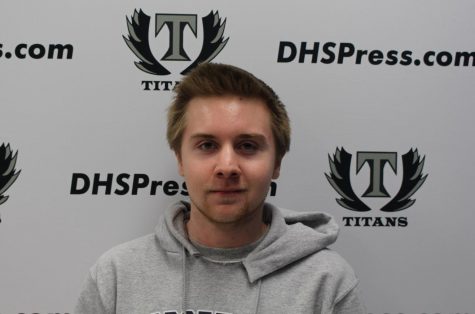
Michael Godek has been on DHS Press staff for two years. He covers politics, school clubs and helps cover sports for the newspaper. He joined the school...
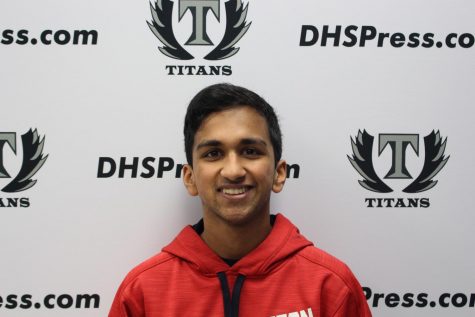
Varun Shankar is a senior at Dominion High School. He has always wanted to be a journalist, largely because of its writing focus. His love of sports then...



